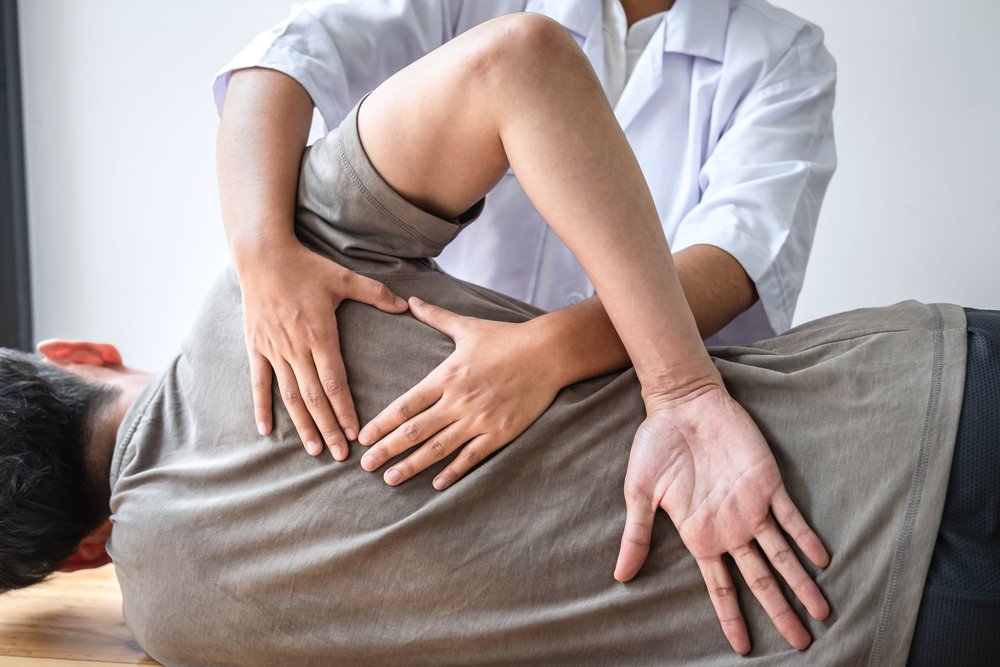 Living with rheumatoid arthritis can be difficult and painful, but staying active is important for managing pain and fatigue. Exercise helps by strengthening muscles and joints, improving range of motion, and decreasing stiffness and swelling in the hands, wrists, ankles, knees, or hips. If you are suffering from rheumatoid arthritis, these exercises may help treat rheumatoid arthritis.
Living with rheumatoid arthritis can be difficult and painful, but staying active is important for managing pain and fatigue. Exercise helps by strengthening muscles and joints, improving range of motion, and decreasing stiffness and swelling in the hands, wrists, ankles, knees, or hips. If you are suffering from rheumatoid arthritis, these exercises may help treat rheumatoid arthritis.
What Is Rheumatoid Arthritis?
Rheumatoid Arthritis (RA) is a chronic, progressive autoimmune disease that affects the joints of the body. It is caused by an abnormal response of the body's immune system which incorrectly attacks the tissue in the joints instead of protecting it from infection or injury. RA causes inflammation and joint pain, as well as stiffness and swelling that can lead to long-term joint damage and disability in those affected by it. Additionally, people with RA may experience fatigue, fevers, anemia, difficulty breathing, and other symptoms.
The exact cause of RA is unknown, but several contributing factors have been identified such as genetics, environment, and lifestyle choices. Treatment for RA typically involves medication to reduce inflammation and pain along with physical therapy to maintain joint strength and movement. For many individuals living with RA their quality of life is greatly improved when they get proper treatment and support from family, friends, and medical professionals.
How Can Exercise Help Rheumatoid Arthritis?
Exercise can be a beneficial treatment for those living with Rheumatoid Arthritis. Exercise helps to reduce joint stiffness, increase range of motion, and strengthen muscles around joints. Regular exercise can also help to maintain overall physical health, improve energy levels, reduce fatigue and stress levels, and may even delay the progression of RA.
It is important for those who suffer from RA to talk to their doctor or physical therapist about developing an appropriate exercise regimen that meets their needs and adheres to any limitations imposed by the disease. With proper guidance, these exercises can form an essential part of managing RA and improving quality of life.
1. Going For A Walk
Going for a gentle walk is an excellent form of exercise for those living with Rheumatoid Arthritis, as it is low impact and can be tailored to the individual's needs. Taking regular walks helps decrease stiffness in joints, and also strengthens muscles around joints to provide more support and stability. Walking can help reduce pain associated with RA by increasing blood flow to affected areas, as well as improving overall physical health and reducing fatigue.
2. Yoga
Yoga can be a great form of exercise for those living with Rheumatoid Arthritis as it helps to reduce joint stiffness, joint inflammation, increase range of motion, and improve flexibility. Regular yoga practice can also help strengthen muscles around joints, improving their stability. Additionally, yoga is known to reduce stress and fatigue levels associated with RA, as well as boost overall physical health and mental well-being.
For those just getting started with exercising, it is recommended to speak with a doctor or certified physical therapist about which type of yoga class is most appropriate according to individual capabilities and needs.
3. Water Exercises
Water exercises are another great form of exercise for those suffering from rheumatoid arthritis. It is low impact which makes it easier on joints but also provides resistance which helps to strengthen muscles and improve joint stability. Additionally, water exercises can increase range of motion, reduce stiffness in joints, and decrease pain associated with the disease. Being in water also helps to reduce fatigue levels and promote relaxation, making it an ideal exercise for anyone living with RA.
4. Strength Training
Strength training helps to strengthen muscles and joints, which can reduce strain on joints and improve range of motion. Strength training can also help reduce pain, fatigue levels, and stiffness associated with RA. It is important for those just getting started with strength training to speak with a doctor or certified physical therapist about which type of exercises are most appropriate according to individual capabilities and needs.
To get the most out of strength training, it is also recommended to do some stretching before and/or after exercise in order to keep muscles from tightening up.
5. Biking
Biking is an excellent form of exercise for those living with Rheumatoid Arthritis as it is low impact and provides a good aerobic workout, which can help improve overall health and reduce stiffness and pain associated with RA.
Additionally, it helps to promote relaxation, making biking an ideal exercise for anyone living with RA. It is important to speak with a doctor or certified physical therapist about which type of biking is most appropriate according to individual capabilities and needs.
There are many different types of exercise available for those living with RA, so it is important to speak with a doctor or certified physical therapist about which type is most appropriate according to individual capabilities and needs. Exercise is an integral part of any comprehensive RA management plan so it is important to consider incorporating it into your daily routine. If you are having trouble with exercise routines, getting in touch with a physical therapist can be beneficial to help reduce pain associated with RA.
If you're struggling with rheumatoid arthritis pain or are in need of physical therapy, visit our specialists at Performance UNLIMITED to provide your body with the best possible care. If interested in a consultation, schedule an appointment directly(opens in a new tab) from our website today!
